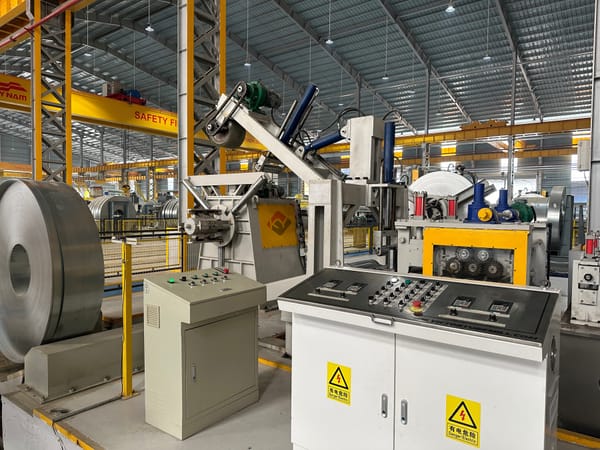
Following the uncoiling and leveling process, the steel strip proceeds to the Shearer & Butt Welder Station. This critical section ensures the continuous operation of the ERW tube mill by joining the tail end of a finished steel coil to the leading end of a new coil. This seamless connection prevents interruptions in the production line, maximizing efficiency and output.
Shearing
The shearing mechanism precisely cuts the irregular or damaged ends of both the expiring coil and the new coil. This prepares the strip ends for a clean and strong weld. Accurate shearing is vital to ensure proper alignment and minimize material waste.
Butt Welding
After shearing, the two ends of the steel strips are brought together and joined using a butt welding process. This typically involves resistance welding, where high current is passed through the joint, generating heat that melts the metal edges. Pressure is then applied to forge the ends together, creating a strong, continuous strip. The butt welding process is designed to create a weld seam that is as close as possible in strength and thickness to the parent material, ensuring consistent quality throughout the entire length of the pipe or tube.
Importance of the Station
The Shearer & Butt Welder Station is indispensable for maintaining a continuous production flow. Without it, the mill would have to stop and re-thread a new coil every time one runs out, leading to significant downtime and reduced productivity. By automating the joining process, this station allows for uninterrupted operation, which is a hallmark of modern, high-efficiency ERW tube mills.
